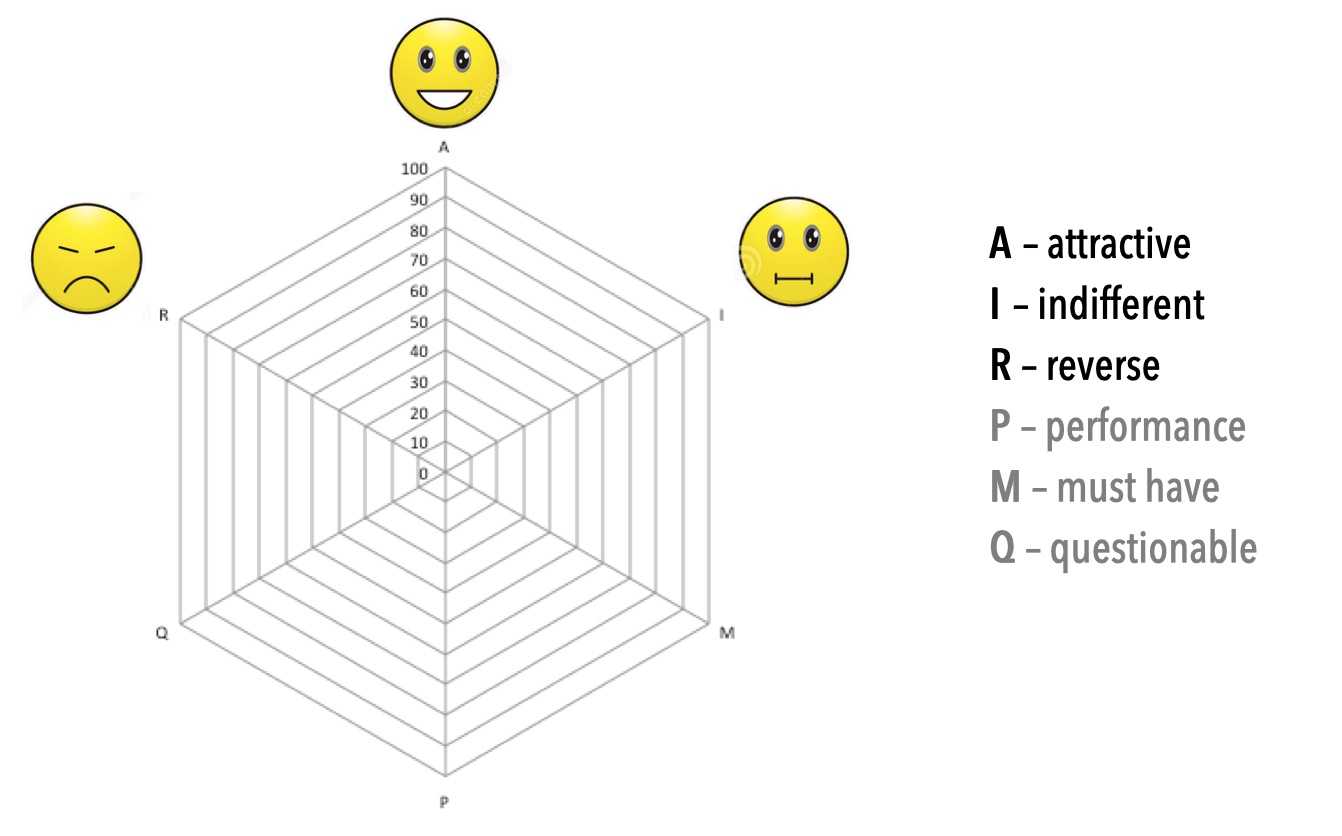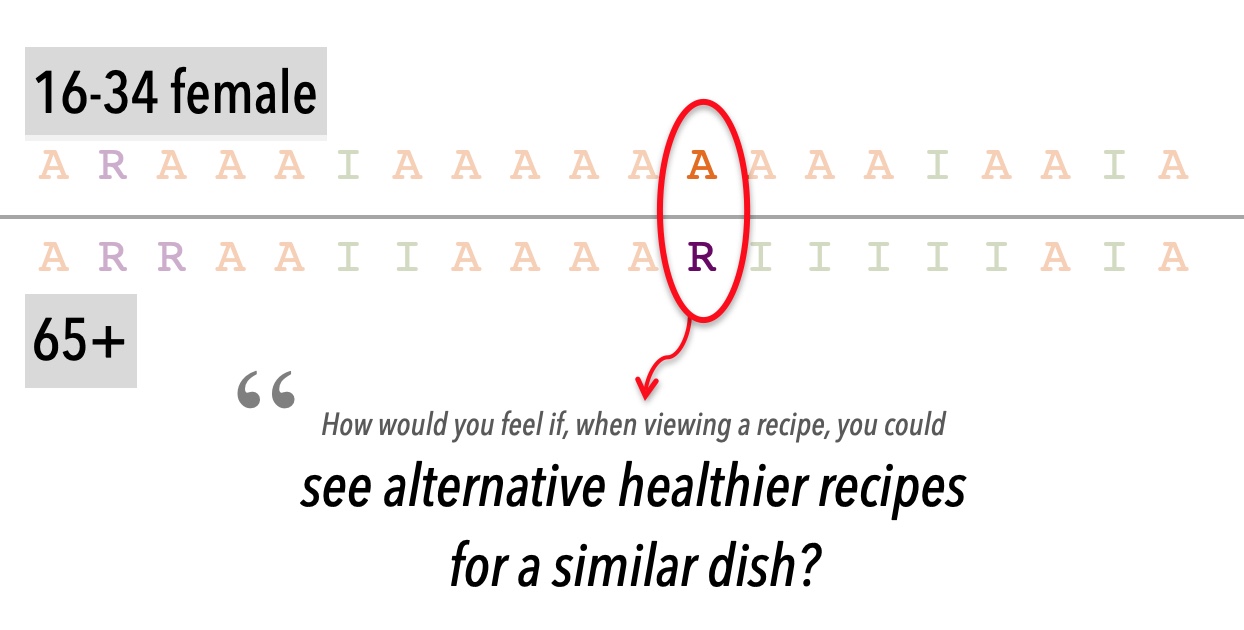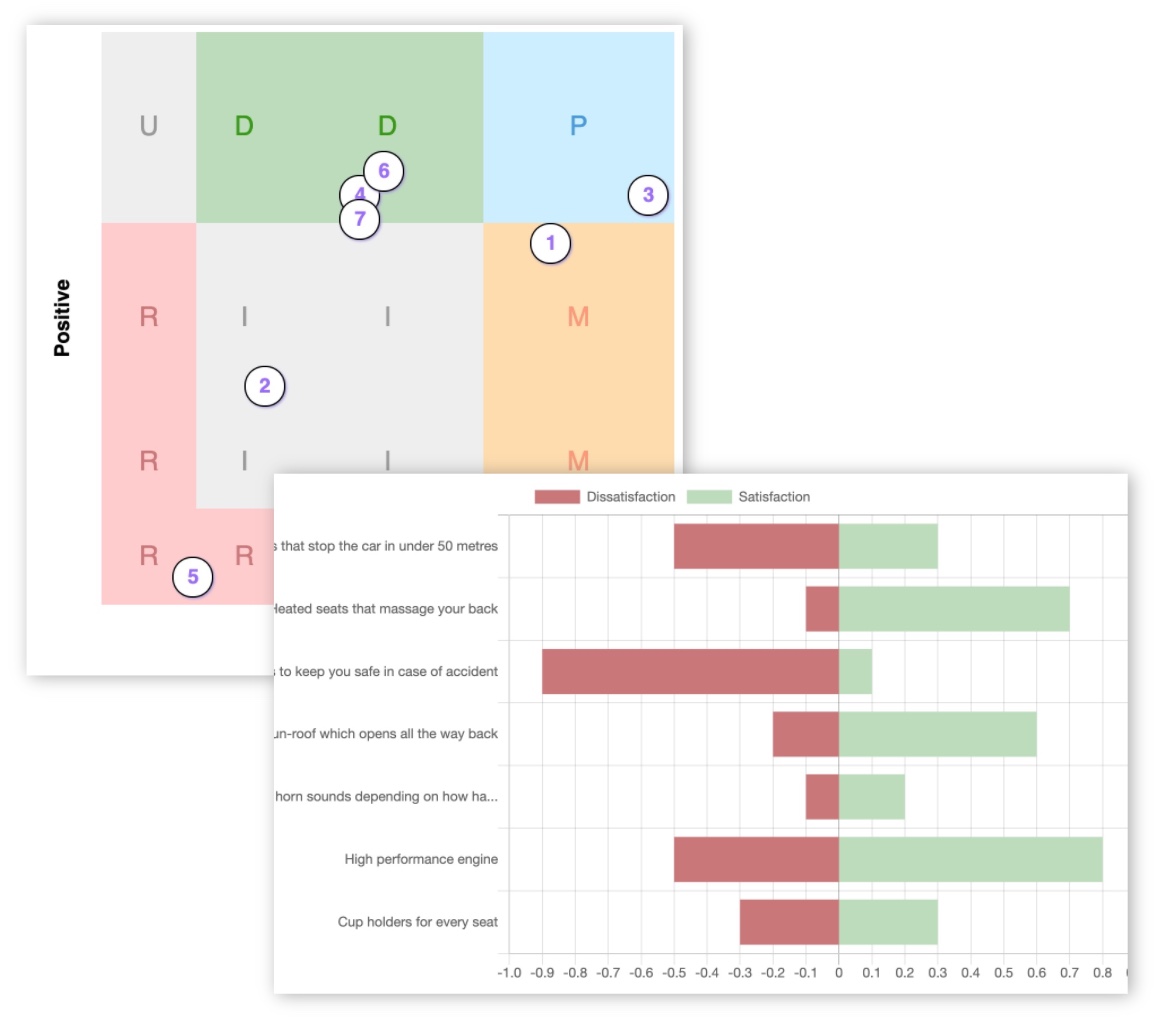Kano model example case study
How I used the Kano model in real life...
Once upon a time, I was working on a very old web product. It was showing its age and needed redesigning and replatforming. Similar projects in other parts of the company had gone badly, with audiences reacting strongly to changes, so I had to tread carefully.
In this article I'll walk through a Kano model example, explaining how we applied Kano to make sure we got the most business and customer value out of the project. A Kano case study, if you like.
During this project we had to do all the Kano stuff manually, which wasted loads of time. That's why I built KanoSurveys.com, so anyone can apply Kano without specialist knowledge with just the click of a button.
Try it out for free
Once you're done reading this page, another Kano model example is when we ran a survey all about Netflix around the time it was thinking about cracking down on password sharing: Netflix's product strategy.
But first, back to this example...
The product
The product was a content site all about cooking recipes. It had thousands of pages of content, got a ton of SEO traffic, and had millions of users who had been on the platform for many years and relied on it in their day to day lives; and were extremely passionate about using it. So if this project went badly, it would be a disaster.
We had to do two things: move to more modern technology (because the existing stack was going out of date and becoming unmaintainable), and update the design to be more mobile-friendly (because we could see traffic patterns changing over time).
It was going to be a lot of work, so I wanted to be smart about where we invested our effort. The product had a ton of features that had been added over time and it made me think - do we really need to rebuild and redesign all of these features, or just some of them...?
If we knew which of the existing features people really valued, and which they didn't care about, and what was missing, we could concentrate in the right areas.
This is classic Kano model territory!
The features
We included features like:
"How to cook" videos showing how to do the recipes
Adding notes to recipes for later
Offering healthier alternative ingredients
Saving / bookmarking recipes for later
Being reminded of recipes that you've saved
Leaving ratings on recipes
Leaving comments on recipes
Earning badges for cooking certain recipes
And so on
Some of these features already existed in the product, some were new ideas that we had based on user feedback and competitor reviews.
Here are some examples of the actual wording of the questions:
| Positive / functional | Negative / dysfunctional |
|---|---|
How would you feel if you could move through the steps of the recipe and play videos hands-free? |
How would you feel if you couldn’t move through the recipe hands-free? (i.e. if you had to use a mouse or the keyboard) |
How would you feel if you could track your progress and earn achievement badges based on recipes you've cooked or videos you've watched? |
How would you feel if you did not get awarded achievement badges based on recipes you've cooked or videos you've watched? |
How would you feel if recipes showed suggestions for alternative ingredients that were healthier? |
How would you feel if recipes did not have suggestions for healthier alternative ingredients? |
The survey
We set up a Kano survey through a simple forms tool by manually creating pairs of multiple choice questions for every single feature, like this:

This took quite a long time and was very repetitive having to re-create the same list of 5 options over and over again, because most standard survey tools don't support the Kano format natively.
We also added questions to capture demographic information so we could slice and dice the data afterwards to see if different types of people had different opinions about the features.

We shared the survey link on our company social media and waited until we had a few hundred responses. Luckily we had a big audience so it didn't take too long.
The analysis
The analysis was all done manually, with custom code written by our software engineering team. That's because all we had was the raw export of the results from the standard survey tool so we had to do all the categorisation ourselves.

We ended up using a mix of a spreadsheet (see an example here of how to build a simple Kano template in Excel or Google Sheets) and custom code to do more advanced analysis with the demographics.
Learn more about Kano analysis techniques.
This took ages (creating the sheet, copy / pasting the raw results into the sheet, writing code to analyse the demographics etc) and would've been much easier and quicker if we had a proper tool to do it.
The results
Time for the most exciting part of our Kano model example.
We plotted results on a radar chart to give a view of how strongly and clearly each one was categorised.

Some features were Must-haves, which we had expected. These were things like saving or bookmarking recipes for later. Most of these features already existed on the platform.
Some features were Delighters, such as tips of the most common pitfalls for each recipe, or entering all the ingredients in your cupboards as a way of filtering recipes that you could make right now. Many of these were ideas for new features that didn't yet exist.

A few results were particularly surprising, so we dug into the demographics and revealed segments based on age that had polar opposite views.

In this case, younger female users wanted to see healthy alternatives, but older users didn't. This was incredibly helpful in figuring out how best to pitch these features to users.
The outcome
We used the results to decide what was in and out of the roadmap and prioritise the backlog to maximise customer satisfaction.
In the end we retired some features that people didn't need anymore, we added a few Delighters that were missing, and made sure to keep the Must-haves so we could continue to meet the key expectations of our core users.
This means the replatform/design was:
As quick as possible because we only spent time updating features that we wanted to keep - anything that came back as "Indifferent" or "Reverse" wasn't migrated.
Valuable to users because they got to keep all the stuff they liked and were using, and they got some new shiny features added too.
Valuable to the business because we got a very positive reaction to the update, which was way better than previous similar projects in other areas of the company.
This example of using the Kano model shows how it can gather valuable insight into what your users really care about, and that information can lead to tangible business results.
This is just one example of the Kano model in action. How will you use it in your next project?
Create your Kano survey for free

 Give Feedback
Give Feedback
